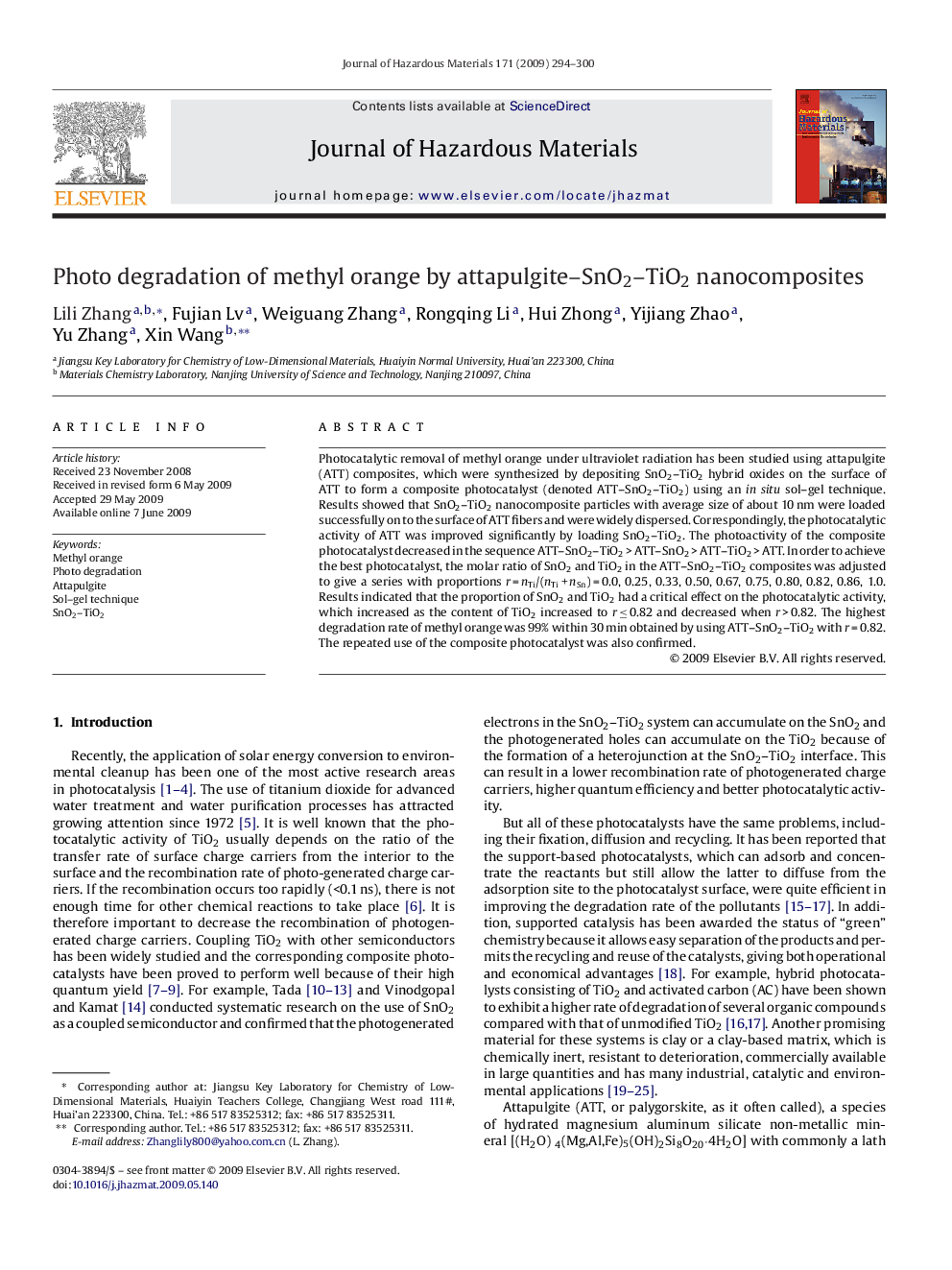| Article ID | Journal | Published Year | Pages | File Type |
|---|---|---|---|---|
| 581135 | Journal of Hazardous Materials | 2009 | 7 Pages |
Abstract
Photocatalytic removal of methyl orange under ultraviolet radiation has been studied using attapulgite (ATT) composites, which were synthesized by depositing SnO2-TiO2 hybrid oxides on the surface of ATT to form a composite photocatalyst (denoted ATT-SnO2-TiO2) using an in situ sol-gel technique. Results showed that SnO2-TiO2 nanocomposite particles with average size of about 10 nm were loaded successfully on to the surface of ATT fibers and were widely dispersed. Correspondingly, the photocatalytic activity of ATT was improved significantly by loading SnO2-TiO2. The photoactivity of the composite photocatalyst decreased in the sequence ATT-SnO2-TiO2 > ATT-SnO2 > ATT-TiO2 > ATT. In order to achieve the best photocatalyst, the molar ratio of SnO2 and TiO2 in the ATT-SnO2-TiO2 composites was adjusted to give a series with proportions r = nTi/(nTi + nSn) = 0.0, 0.25, 0.33, 0.50, 0.67, 0.75, 0.80, 0.82, 0.86, 1.0. Results indicated that the proportion of SnO2 and TiO2 had a critical effect on the photocatalytic activity, which increased as the content of TiO2 increased to r â¤Â 0.82 and decreased when r > 0.82. The highest degradation rate of methyl orange was 99% within 30 min obtained by using ATT-SnO2-TiO2 with r = 0.82. The repeated use of the composite photocatalyst was also confirmed.
Related Topics
Physical Sciences and Engineering
Chemical Engineering
Chemical Health and Safety
Authors
Lili Zhang, Fujian Lv, Weiguang Zhang, Rongqing Li, Hui Zhong, Yijiang Zhao, Yu Zhang, Xin Wang,
